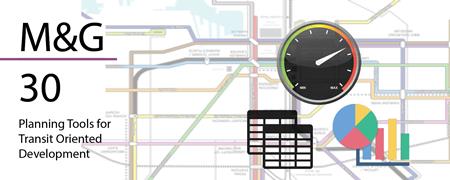 The Maryland Rail Commuter, or MARC train, runs for 187 miles, connecting northeast Maryland to Baltimore and Washington, D.C. with another line from D.C to Martinsburg, West Virginia. The line also serves the city of Frederick via a spur. The commuter rail system’s three lines (Penn, Camden and Brunswick) carry an average weekday ridership of 36,000. The commuter rail system has 42 stations with approximately 21,084 acres located within the half-mile station areas. About 5,200 acres are undervalued or vacant, presenting better potential for development or redevelopment.
The Maryland Rail Commuter, or MARC train, runs for 187 miles, connecting northeast Maryland to Baltimore and Washington, D.C. with another line from D.C to Martinsburg, West Virginia. The line also serves the city of Frederick via a spur. The commuter rail system’s three lines (Penn, Camden and Brunswick) carry an average weekday ridership of 36,000. The commuter rail system has 42 stations with approximately 21,084 acres located within the half-mile station areas. About 5,200 acres are undervalued or vacant, presenting better potential for development or redevelopment.
The MARC corridors provide commuter TOD opportunities, which differ from downtown Baltimore or Washington, D.C. area TODs. Due to the morning and afternoon peak directional commuting patterns and the longer distances between stations, commuter-TOD tends to be predominantly residential with some retail. Since MARC shares the rail right-of-way with freight trains, which have historically served adjacent industrial land uses, the introduction of commuter-TOD has the challenge of changing traditional land use patterns.
Among the three lines, there is a wide range in service frequency. While the Penn Line operates trains throughout the day with 30 minutes between trains during rush hours, the Camden and Brunswick Lines have service restricted to rush-hour periods only. Most MARC lines run on freight rail lines, so schedules are constrained by line-sharing.
The three MARC lines service eight jurisdictions in two metropolitan regions, which have different opportunities, challenges and market readiness for TOD. Even in a jurisdiction with a high growth rate and potential, a station area could be limited by physical, environmental and land use constraints for development. Notable TODs near MARC stations are developments near Metropolitan Grove and Gaithersburg Stations, and in recent years, in the Odenton Station area.
In recent years, the state and local jurisdictions have stepped up their efforts on planning and implementing TODs near MARC stations, e.g., New Carrollton, Greenbelt, Laurel, Penn Station, Aberdeen, Dorsey, and Savage Stations. Stations with transfer opportunities to other transit systems have a better chance of attracting public and private TOD interest, e.g., New Carrollton, Greenbelt and College Park. These station areas would have better market conditions for higher density and mixed-use developments. MDOT is increasing MARC services along the Penn Line and improving existing services with short and long term plans for all the lines, which provides better prospects for attracting private investment.
